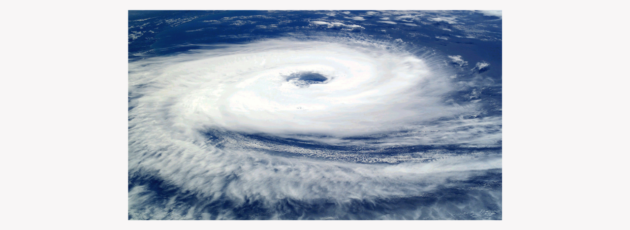By Leslie Door
Director of Research, Product Development, Risk & Regulatory Compliance
Zephyr Insurance Company
Every year weather disasters cause billions of dollars in damages. As climate change continues to affect weather patterns and cause more natural disasters and severe weather events, it is important for insureds to understand the different perils associated with these events and the separate types of insurance available to insure against them. The more obvious catastrophic events such as wildfires and flooding, include the peril in their name, while hurricane is less apparent due to the numerous perils associated with them.
Hurricanes are massive low-pressure weather systems with maximum sustained winds over 74 mph. The category of hurricane is defined by Saffir-Simpson Hurricane Wind Scale (1 to 5), based on a hurricane’s maximum sustained winds. The higher the category, the greater the hurricane’s potential for property damage. Though hurricanes are well known for strong and destructive winds, there are other perils associated with these types of storm systems that are not covered under hurricane insurance and require different policies.
Let’s start with the basics. Hurricane season runs from June 1 to November 30. Hurricane insurance protects property owners from “windstorm” meaning wind or hail during a hurricane, which results in direct physical loss or damage to property or any ensuing damage to the interior of a building, or to property inside a building only if the direct force of the windstorm first damages the building, causing an opening by which rain, snow, sleet, sand or dust enters and causes damages. It does not however provide coverage for loss or damage caused by flood, waves or storm surge during a hurricane.
Wind is often thought to be the destructive element within a hurricane; however, powerful winds are not the only deadly force during a hurricane. Hurricanes are especially dangerous as they pose a triple threat: violent winds, torrential rains, high waves and storm surge also referred to as the three Ws: Wind, Water and Waves. In fact, a vast majority of damage and destruction from hurricanes is related to water and waves.
Torrential rains from slow moving storm systems have also been the catalyst for some of the worst floods in American history. Hurricane Harvey in 2017 brought a record 51 inches of rainfall and 27 trillion gallons of rain dumped over a period of six days causing major flooding in coastal Texas. Storm surge poses the greatest threat to life, accounting for half the fatalities during hurricanes. Storm surge is seawater that is pushed toward the shore by winds swirling around the storm. Storm surge combined with waves can reach incredible heights, causing extensive damage, washing out roads and collapsing buildings. As the water levels rise and move inland, rivers and lakes overflow causing severe flooding.
Although storm surge and torrential rains are often associated with a hurricane, rising surface waters and flooding are not covered perils under the hurricane policy. Therefore, it is especially important for property owners in coastal areas, or near rivers and lakes to understand the different perils and insurance coverage needed to insure against them.
We covered the three Ws that are frequently associated with a hurricane, but that is not all. Hurricane winds can also spawn tornadoes. When a hurricane makes landfall, it weakens, and winds towards the bottom of the storm slow down; however, winds towards the top continue spiraling and potentially create tornadoes. Although tornados formed from tropical cyclones are weak and typically do not last long, they can still rip apart homes and buildings of unsuspecting nearby areas with little warning. Two examples of tornadoes that developed from tropical systems in recent years; hurricane Isaias in 2020 produced an EF2 tornado in North Carolina and the remnants of hurricane Ida in 2021 produced an exceedingly rare EF3 tornado in New Jersey.
So, what have we learned so far? Without a doubt, hurricanes are a destructive force and combination of multiple perils. To have homeowner and hurricane insurance is not enough. Adding a flood policy to your portfolio of insurance products is probably a good idea. Yet, there is still more insureds can do than just have all the right insurance coverage in place.
Insureds also need to understand the role preparedness and risk mitigation have in preventing and reducing the impact of these events. Although there is nothing we can do to stop a hurricane, we can be better prepared. Retrofitting to improve the structural integrity of the home and loss mitigation grant programs are aimed at minimizing the damages caused by hurricanes. According to National Institute of Building Science, mitigation can save $13 for every $1 invested. By building stronger structures and retrofitting existing ones, we can save lives, improve resiliency, and ultimately help reduce the cost associated with these destructive storms.
Leslie Door has a BSBA from Hawaii Pacific University and MBA in Global Management from The University of Phoenix. She started her career in insurance 25 years ago as a licensed administrative assistant with Allstate. In 2001 she moved to the carrier side as an underwriter for Zephyr Insurance Company, Hawaii’s hurricane insurance provider where she now serves as Director of Research, Product Development, Risk and Regulatory Compliance. She recently served as President of the Honolulu Association of Insurance Professionals and as education chair. Leslie is a proud volunteer of the Red Cross where she currently serves on the Board of Directors as Secretary, Mission Committee Chair and as a Disaster Action Team Responder.
